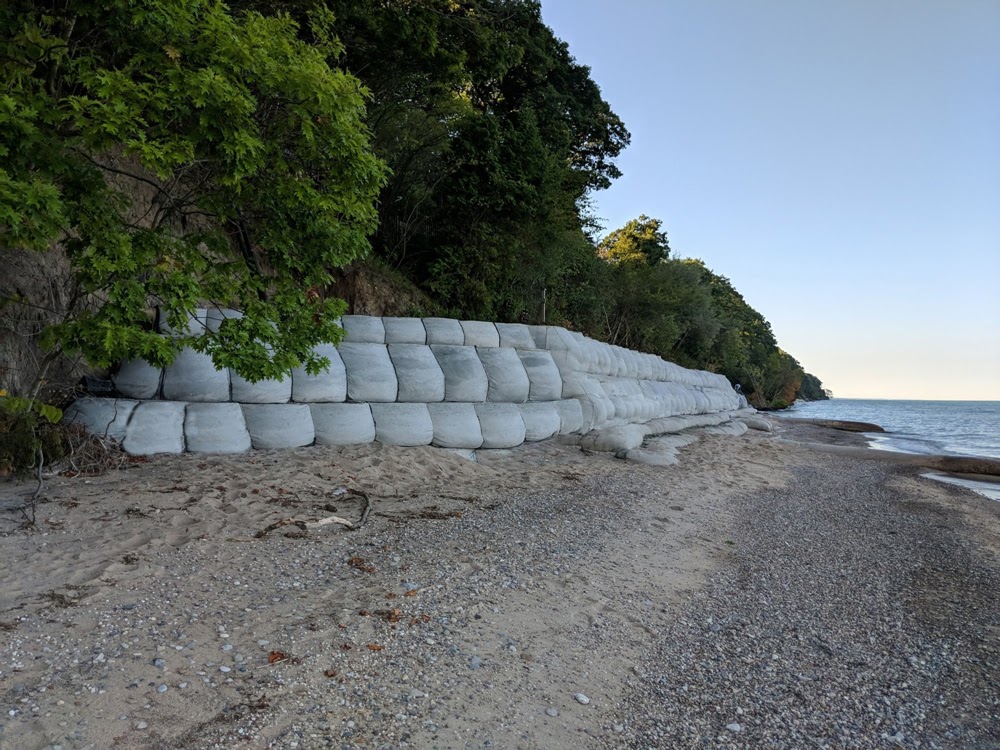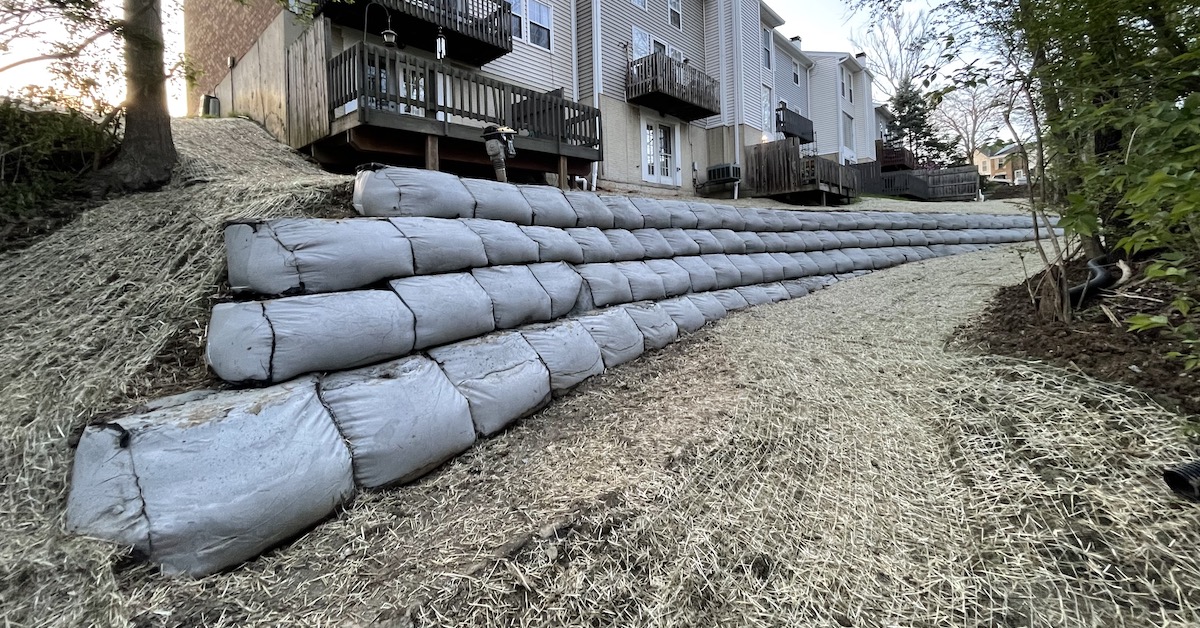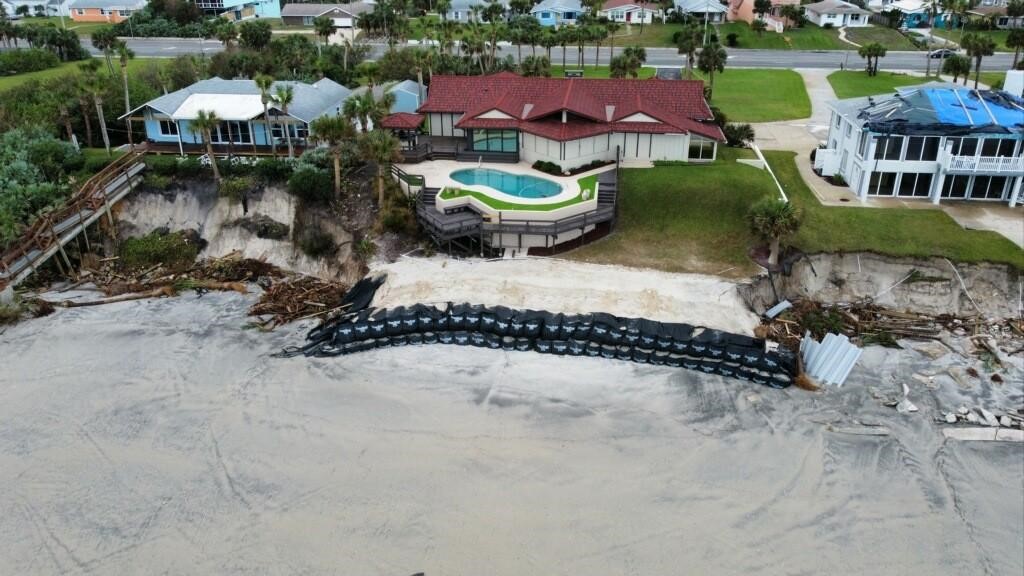Common Signs of Retaining Wall Failure: Stabilization Solutions
Retaining wall failure can be an expensive, disastrous problem. Know the signs of a failing retaining wall and some of the common solutions for supporting them.

A failing retaining wall can have disastrous consequences for property owners, city public works departments, and others located in coastal areas. That’s why it’s essential to know the signs of retaining wall failure, as well as the causes and solutions that can protect your property.
Signs of a Failing Retaining Wall
Retaining walls are essential for stabilizing cliffs and bluffs so they don’t give way to erosion and cause damage to the land, homes, and roadways. However, they can sometimes fail, especially without consistent maintenance. These signs can indicate that your shoreline retaining wall is failing and at risk of collapsing:
- Sagging or bowing: Chances are, if it looks like your retaining wall is beginning to bend, there may be a problem with the structure itself or what it’s holding back.
- Cracks in the wall: You may notice cracks forming in parts of the wall if it’s at risk of failing, as the pressure will cause the rocks to break or buckle.
- Separation from the soil: If the soil behind the retaining wall is beginning to pull away from the wall itself, it could be a sign of soil movement—this is more common during periods of extreme weather.
- Collapse of soil around the wall: Soil around the retaining wall can be a strong indicator of the health of the retaining wall itself. Soil collapse can indicate the weight of the soil behind the wall has changed too much for the wall to handle.
Causes of Retaining Wall Failure
There are multiple causes that lead to the failure of a retaining wall, both from nature and human activity. Here are some of the most common, both on inland lakes and ocean shorelines.
Wave Action
The wave action that drove you to build a shoreline retaining wall in the first place is sometimes the same thing that can cause your retaining wall to fail. Over time, the water can batter and wear away at the rocks and soil making up the wall, especially if it’s not reinforced.
This is particularly true if your retaining wall is in an area prone to flooding, high tides, and rough waters.
Soil Movement
Soil behind the retaining wall is prone to movement from natural and mechanical activity of all kinds. The causes can include anything from consistent, driving winds over the course of many years, movement of structures or objects on top of the soil, long-term erosion, unusual weather patterns, and countless other factors.
Design Flaws
There are plenty of things that can go wrong if your builder mishandled your retaining wall construction from the start. Cutting corners by using cheap materials and prioritizing speed over proper installation to lower installation costs can cause the wall to collapse more easily.
Another design factor that can lead to serious structural issues is miscalculating the wall’s load. If your engineer underestimates how much of a load the retaining wall will have to bear, it could ultimately mean that the retaining wall fails—and brings other structures and land down with it.
Poor Drainage
Retaining walls need to have a drainage system if they’re meant to serve as a long-term solution. This allows water in the soil behind the wall to drain correctly.
However, even with proper drainage, drain holes on larger retaining walls are prone to clogging—meaning the soil behind the wall is more likely to become saturated.
When the soil behind the wall becomes too wet, it gets heavier and is more likely to make your retaining wall give way.
Solutions for How to Fix a Retaining Wall

If you’re looking for how to prevent retaining wall failure, there are several options you can use. Here are some that we would typically recommend, especially for organizations and agencies that don’t have the means to replace the retaining wall altogether.
Adding Native Plants
One of the best retaining wall solutions is to add vegetation on and around the structure. Native dune grass, shrubbery, and other plants can reinforce and stabilize retaining walls. This is because the root systems of plants trap soil to keep it in place and absorb moisture naturally.
Installing Proper Drainage
Implementing drainage systems to keep water runoff away from the soil behind the wall can make a huge difference in the wall’s load-bearing capacity. This might also include removing paved areas above the retaining wall, which can make it harder for runoff to drain properly.
Reinforcing the Retaining Wall
There are multiple retaining wall stabilization options that involve adding reinforcement. Here are some of the most common solutions:
- Riprap stones
- Erosion fencing
- Stepped concrete
- Bulkheads
- Stacked sandbags
- Geotextile bags like TrapBag®
TrapBag is a retention and barrier system that uses less material than stacked sandbag walls. They also tend to last longer than other types of reinforcement options, often surviving up to five years.
TrapBag erosion control bags are easy to transport, store, and deploy, offering a versatile, cost-effective solution while you implement other, more permanent retaining wall stabilization solutions.
Use TrapBag as a Retaining Wall System
 TrapBag is a great solution for erosion control because it can withstand wave action and secure the land behind it, preventing further erosion. It can slow down beach and cliff erosion, making it easier for shoreline ecosystems to thrive.
TrapBag is a great solution for erosion control because it can withstand wave action and secure the land behind it, preventing further erosion. It can slow down beach and cliff erosion, making it easier for shoreline ecosystems to thrive.
Discover more about how TrapBag can help with erosion control and retaining wall reinforcement by contacting us today!
Meet the author
Get the Dirt Before the Flood Hits
Stay ahead of flooding, erosion, and disaster response challenges. The Dirt, TrapBag’s monthly newsletter, delivers field-tested tips, real-world case studies, and the latest in barrier technology straight to your inbox.

